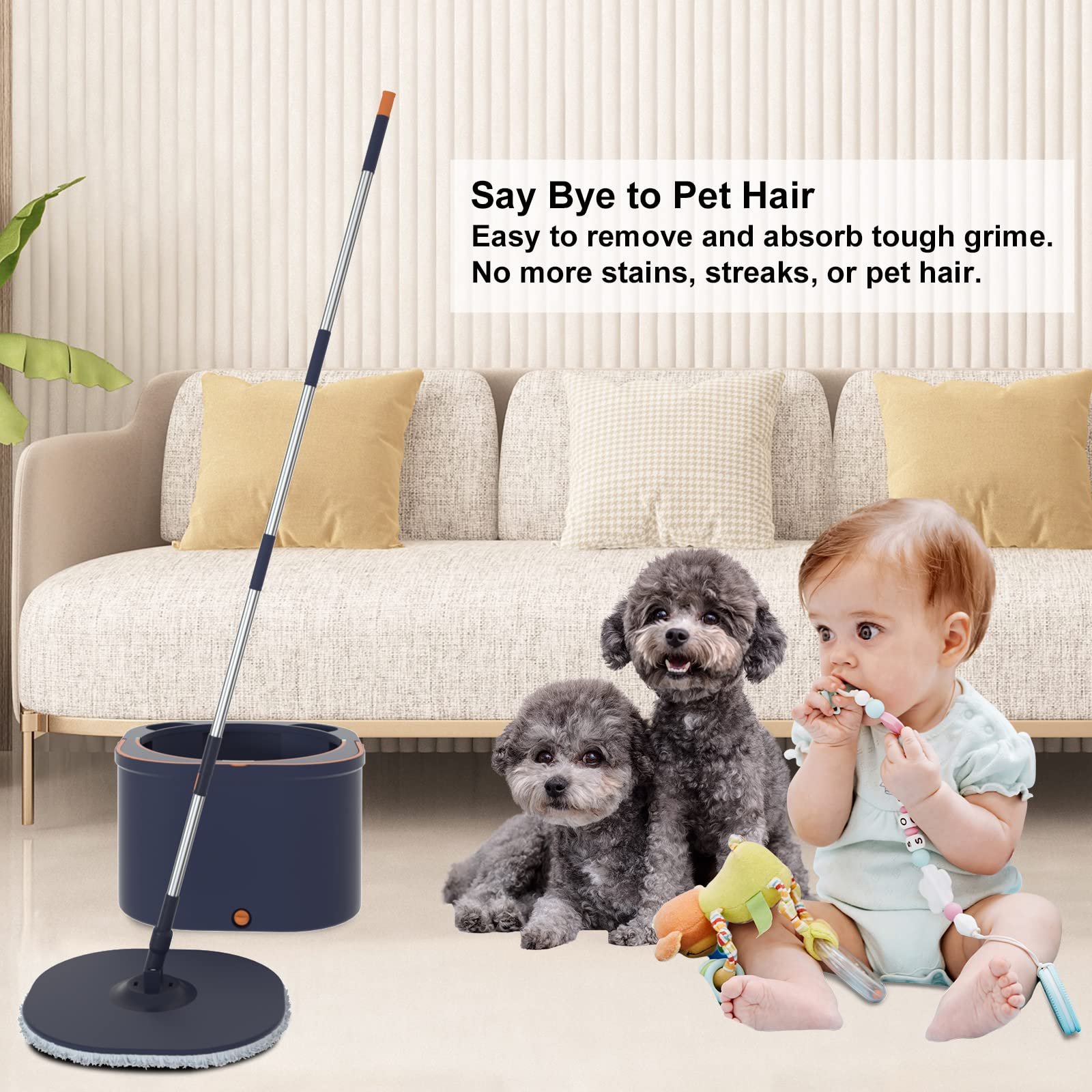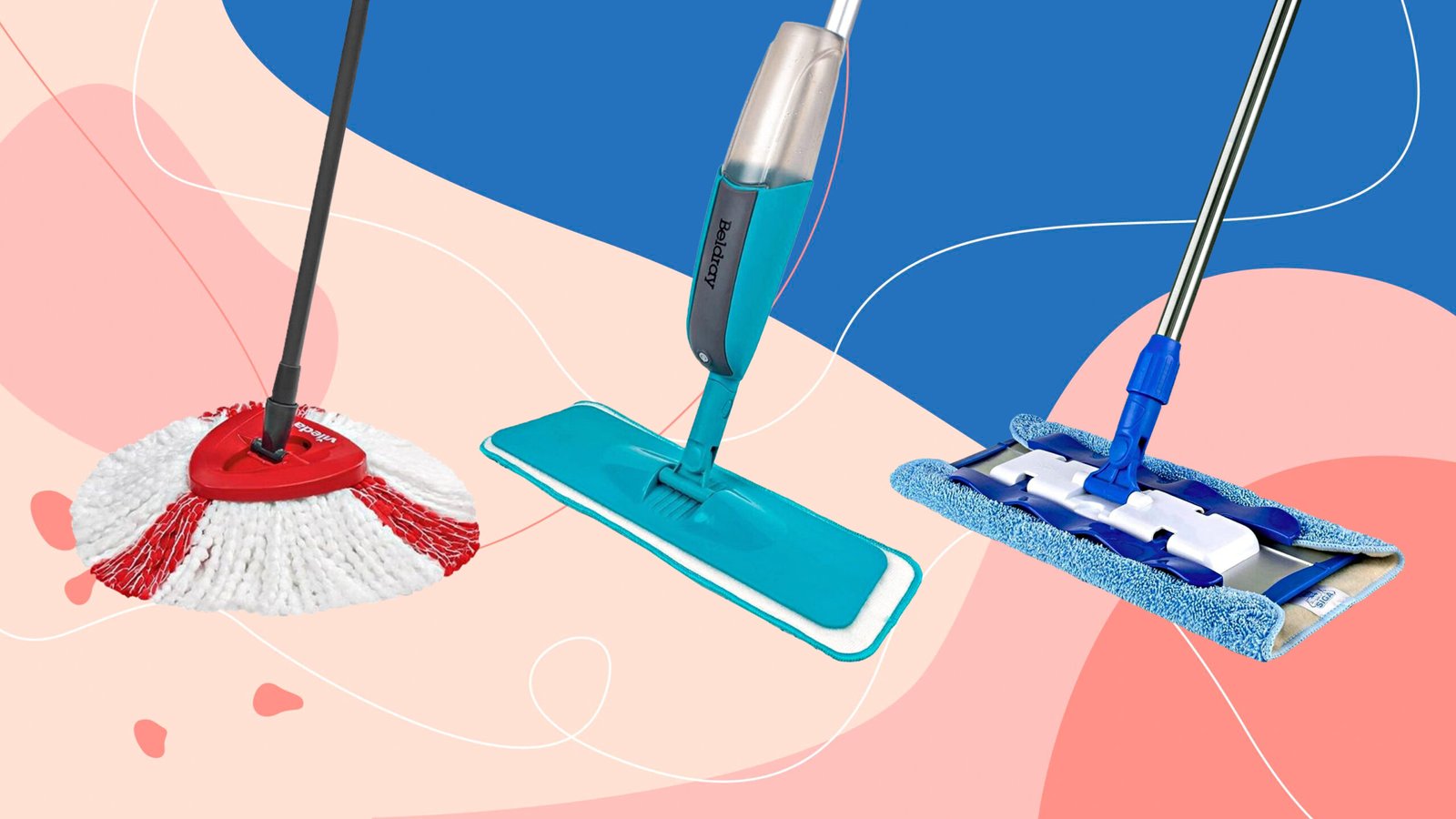In This Article
Introduction to Microfiber Technology
Microfiber represents a significant advancement in textile technology, characterized by its composition of exceedingly fine synthetic fibers. Typically, microfiber consists of polyester and polyamide (nylon), which are intricately woven together to form a fabric much finer than a single strand of human hair. To put this into perspective, an individual microfiber is approximately one hundredth the diameter of a human hair, allowing it to penetrate even the smallest crevices and surfaces that conventional fibers cannot reach.
The unique structure of microfiber imparts several properties that make it exceptionally effective at cleaning. One of the key attributes is its high absorbency. The intricate network of fibers can hold up to seven times its weight in water, making microfiber mop heads particularly efficient for tasks involving liquid spills and wet cleaning. This absorbent nature ensures that surfaces are left drier, reducing the risk of slips and falls.
Another notable property of microfiber is its electrostatic capability. When used dry, microfiber mop heads generate a static charge that attracts and holds dust particles. This electrostatic action is particularly beneficial in environments where dust control is critical, such as hospitals and clean rooms. The fibers trap dust and dirt effectively, preventing these particles from being re-released into the air, thereby improving indoor air quality.
Furthermore, the microscopic size and density of the fibers create a large surface area within the mop head. This expansive surface area increases the contact points between the mop and the surface being cleaned, enhancing the mechanical action required to lift and remove dirt and grime. The combination of these properties—high absorbency, electrostatic attraction, and extensive surface area—makes microfiber mop heads an advanced and efficient tool in the realm of cleaning technology.
The Physics of Cleaning: How Microfiber Works
The effectiveness of microfiber in cleaning can be attributed to its unique scientific properties, which differentiate it significantly from traditional materials like cotton. At the core of its superior performance is the structure of the fibers themselves. Microfiber is composed of extremely fine synthetic fibers, typically a blend of polyester and polyamide, that are split during the manufacturing process. This splitting results in a vast increase in surface area, allowing the microfiber to cover more ground and interact with more particles than conventional fibers.
One fundamental principle that enhances microfiber’s cleaning power is capillary action. Due to the high surface area and the intricate network of split fibers, microfiber can draw in and hold liquids, grease, and dirt more effectively. Capillary action enables the fibers to absorb several times their weight in water, which is essential for trapping and retaining moisture and debris. This property is particularly advantageous for cleaning tasks that require substantial absorption and retention, such as mopping floors or wiping down surfaces.
Additionally, the friction generated by microfiber plays a crucial role in its cleaning efficiency. The fine fibers create a larger contact area with surfaces, increasing the frictional forces at play. This enhanced friction allows microfiber to physically lift and trap dirt particles, unlike cotton, which tends to push dirt around. Moreover, the fine fibers can penetrate microscopic crevices and remove particles that traditional fibers might miss.
Static electricity further augments microfiber’s ability to attract and hold onto dust and dirt. When microfiber is used dry, the friction between the fibers and the surface generates a static charge. This charge effectively attracts and holds onto dust particles, preventing them from being redistributed into the air. This is particularly useful in dust-prone environments such as households with pets or industrial spaces with high foot traffic.
In practical terms, these properties translate into superior cleaning performance across various settings. In household cleaning, microfiber mop heads are highly effective at picking up pet hair, dust, and spills, providing a streak-free finish. In industrial environments, microfiber’s durability and efficiency make it invaluable for maintaining large areas with minimal effort. The combination of capillary action, friction, and static electricity ensures that microfiber outperforms traditional cleaning materials, offering a more thorough and efficient cleaning solution.
Environmental and Health Benefits
Microfiber mop heads present notable environmental advantages primarily due to their high absorbency and superior cleaning efficiency. One of the most significant benefits is the reduced water usage. Traditional mops often require substantial amounts of water to achieve the same level of cleanliness that microfiber mop heads can accomplish with considerably less. This efficiency not only conserves water but also minimizes the environmental impact associated with water extraction and treatment processes.
Additionally, microfiber mop heads typically require fewer cleaning chemicals. Their unique structure allows them to trap and remove dirt and bacteria more effectively, often using just water or minimal cleaning agents. This reduction in chemical usage translates to fewer harmful substances being released into the environment, thereby decreasing pollution and promoting a healthier ecosystem. Over time, the decreased need for chemicals also leads to lower costs, making microfiber mop heads an economically viable choice for both households and businesses.
The health benefits of microfiber mop heads are equally compelling. Their ability to capture and retain allergens, dust, and bacteria contributes to improved indoor air quality. This capacity is particularly beneficial for individuals with respiratory conditions such as asthma or allergies. By effectively removing these contaminants from surfaces, microfiber mop heads can help reduce the incidence of respiratory issues and infections. Studies have shown that environments cleaned with microfiber technology have lower levels of airborne particles, supporting the claim that these mop heads contribute to healthier living and working spaces.
In essence, the environmental and health benefits of microfiber mop heads underscore their superiority over traditional cleaning tools. By conserving water, reducing chemical usage, and enhancing indoor air quality, these mop heads offer a sustainable and health-conscious solution for modern cleaning needs.
Practical Tips for Using and Maintaining Microfiber Mops
Microfiber mop heads have garnered significant attention for their superior cleaning capabilities. To maximize their effectiveness, it’s important to adhere to certain best practices in their use and maintenance. When using microfiber mops, it’s crucial to tailor your approach based on the type of surface you are cleaning. For hardwood floors, ensure the mop is only slightly damp to avoid moisture damage. For tile or laminate, a slightly wetter mop can be more effective in capturing dirt and grime.
Regular washing is key to maintaining the performance of microfiber mop heads. Ideally, they should be washed after every use to remove accumulated dirt and bacteria. Use a gentle cycle and cold or warm water to avoid damaging the fibers. High heat can degrade microfiber, reducing its effectiveness. Therefore, it’s imperative to avoid using hot water or high heat settings when drying. Air drying is preferable, but if you must use a dryer, select a low-heat setting.
Fabric softeners, bleach, and harsh detergents should be avoided as they can coat or damage the fibers, diminishing the mop’s absorbency and cleaning efficiency. Instead, use a mild detergent. A common question pertains to odor buildup. If your microfiber mop head starts to smell, soak it in a mixture of water and white vinegar before washing. This helps to break down any residue and neutralize odors.
Over time, you may notice a decline in absorbency. This can often be remedied by a deep clean: soak the mop heads in hot water mixed with a bit of baking soda, then wash as usual. It’s also beneficial to periodically inspect the mop heads for wear and tear. Replace them once they show significant signs of wear, as frayed or broken fibers can compromise cleaning performance.
By following these practical tips, you can ensure that your microfiber mops remain effective and durable, providing a cleaner, healthier environment for your home or business.










